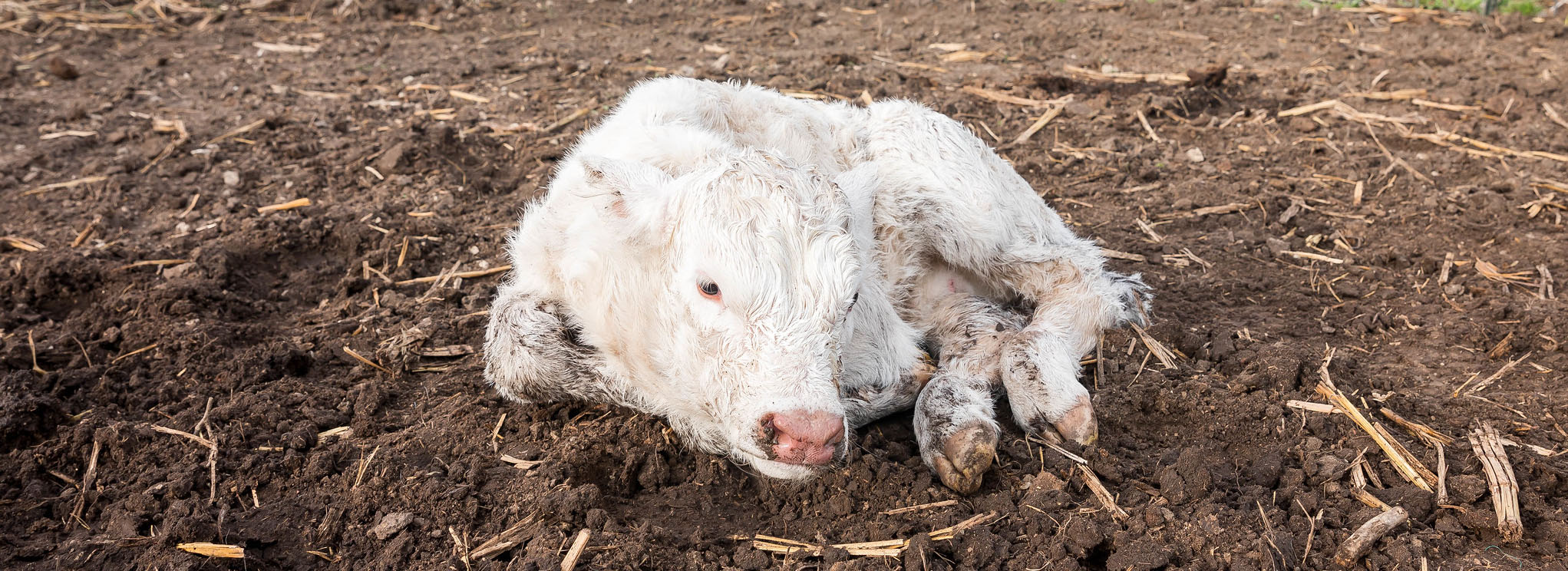With most of the nation’s fall-calving cowherd entering late gestation, Kansas State University beef cattle experts reminded producers of the causes and prevention methods associated with weak calf syndrome, or dummy calf, on a recent episode of the Cattle Chat podcast.
“Think of (what we call dummy calf) as contrasting everything a calf should do at birth – get up quick, vigorously nurse, jump around and be active,” said K-State veterinarian Bob Larson.
K-State veterinarian Brad White added: “(Calves with this condition) appear to be relatively healthy but just have no interest in nursing and not a lot of awareness of their surroundings.”
Calves who go without oxygen during a dystocia event (difficult birth) are at risk of becoming a “dummy,” according to K-State veterinarian Brian Lubbers.
“In utero, the calf is supplied things like blood and oxygen through the umbilical cord,” he said. “If you have a dystocia where the calf gets stuck for a while, and the umbilical cord is obstructed, oxygen is cut off before the calf can breathe on its own, causing a developmental issue.”
In these cases, the severity and chance of recovery depend on how long the brain goes without oxygen. Breach and backward birthing positions prolong oxygen deprivation, Larson said, noting that all birthing difficulties still increase the possibility of a dummy calf.
“A breach birth (hindquarters first) and a backward calf (rear legs presenting first) are both at higher risk of going for a while without oxygen because that umbilical cord is going to be pinched off longer,” he said.
“Calves that come out headfirst and forward – the way they should – still may experience this. If there is any kind of calving difficulty, producers may run into problems with dummy calves.”
Preventing dummy calf starts with the cow well before birth. K-State beef cattle nutritionist Phillip Lancaster said producers should focus their precautions on first-time calvers.
“Generally, first-calf heifers have a higher rate of dystocia,” Lancaster said. “To prevent dummy calves, producers must make sure those females are at the proper percentage of their mature weight before they calve for the first time.”
“Around breeding time, check pelvic areas to ensure that those heifers have a big enough skeletal frame to give birth to the expected calf size.”
Certain infectious diseases have also been linked to dummy calf. They include leptospirosis and bovine viral diarrhea virus (BVD).
“BVD is a virus only in about 7% of cowherds in the U.S. So, it is not as common of a cause as birthing difficulties, but it can certainly contribute to dummy calf by affecting their cerebellum (part of the brain related to muscle control and movement),” White said.
“Their head may be misshapen,” Larson said. “A lot of times their lower jaw is short, they cannot maintain their balance and may have some tremors.”
Once a producer has recognized a dummy calf case, Lancaster said they must try and catch affected calves up to speed nutritionally.
“The main thing to focus on is getting colostrum (first milk after birth) into them. Producers are probably going to have to tube that calf and then try to get it to nurse from a bottle,” he said.
To hear the full discussion, listen to Cattle Chat on your preferred streaming platform.



